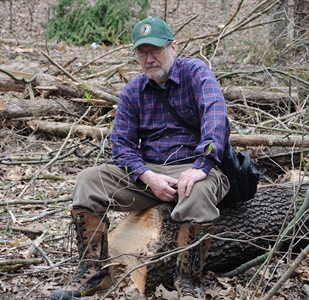Tom Foti has been one of the chief architects of the state’s System of Natural Areas through the history of the Arkansas Natural Heritage Commission, so we asked him to list his top five favorite natural areas. Here are his picks, all of which he “brought to the table” as priorities that deserved to be added to the System, in no particular order.
Top Five Natural Areas According to Tom
Falcon Bottoms Natural Area
In the 1980s Tom identified Bayou Dorcheat in Columbia, LaFayette, and Nevada counties as one of the highest quality small- to medium-sized streams remaining in Arkansas’s portion of the Gulf Coastal Plain. He convinced the Commission to begin investing in land there with a small parcel acquired in 1991. Since that time, 24 additional purchases have built a protected corridor of 3,890 acres along 7.5 miles of stream.
Terre Noire Natural Area
Tom has often shared with staff the story of how Terre Noire came to be added to the System. It was identified by Tom in the 1980s during his groundbreaking work to identify the best remaining and most ecologically significant sites in the Coastal Plain. Degraded by years of fire suppression and cedar encroachment, it took the trained eye of a gifted ecologist to see (and hear) the site’s potential. Tom tells of the site being so grown up in cedar that it was only after hearing the calls of grassland birds through the trees that he understood there was still prairie on the site, and that it could be restored. Now, 18 years after Tom convinced reluctant staff to acquire the first parcel, Terre Noire is widely recognized as one of the highest quality blackland prairie and woodland sites in the region.
Lorance Creek Natural Area
This natural area is a cooperative project between the ANHC and the Arkansas Field Office of The Nature Conservancy. The 389-acre area was first acquired in 1990 (with acreage added in 2014) and includes a diverse mosaic of high quality upland pine-hardwood woodland, pine and hardwood flatwoods, bottomland hardwood forest, seeps, and a groundwater-fed cypress-tupelo swamp. The area is home to a number of rare plant and animal species and features a wheelchair-accessible paved trail and boardwalk that allows visitors to get out into the heart of the swamp.
White Cliffs Natural Area
This 573-acre area was acquired in 1989. It is one of the most unique in the System and includes blackland prairies, rare chalk glades, a 100-foot chalk bluff, upland woodlands, bottomland hardwood forests, and open marshes along the shores of Millwood Lake. It is home to at least 28 rare plant and animal species.
Warren Prairie Natural Area
During recent field work at Warren Prairie, Tom described the area as “arguably the most important natural area in the System.” Now encompassing nearly 5,600 acres, acquired in 16 separate purchases, Warren Prairie is truly a one-of-a-kind mosaic of rare and ecologically important habitats. The area includes a large complex of saline glades and barrens, pine savannas, oak and pine woodlands, pine and oak flatwoods, bottomland hardwood forests, and open marsh. It is home to more than 30 rare plant and animal species, including the federally threatened geocarpon (Geocarpon minimum) and a significant population of the federally endangered red-cockaded woodpecker (Picoides borealis).
These areas are all unique but share one commonality: they are all in the West Gulf Coastal Plain. No one who has worked with Tom is surprised by this, as he has been a champion of this natural division throughout his career. On many occasions, he has pointed out that the West Gulf Coastal Plain has long been under-appreciated as compared to the mountains of Arkansas and that it contains incredible biological diversity not found anywhere else.
